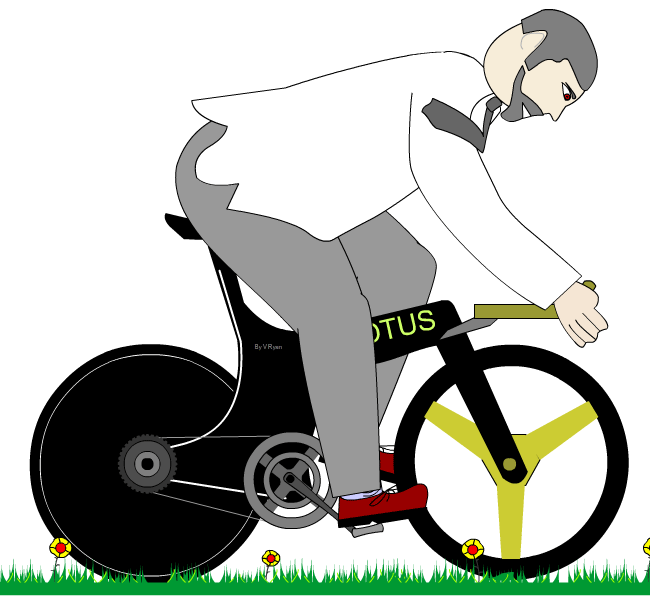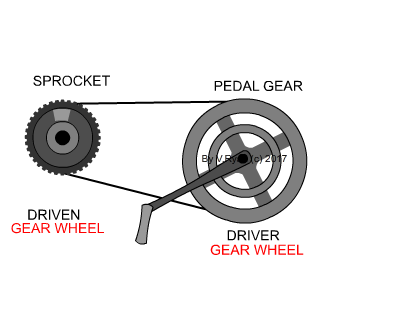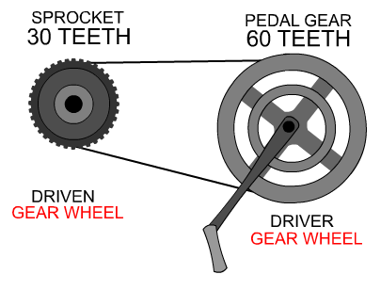| CLICK HERE FOR INDEX PAGE | |
| THE BASICS - GEAR RATIO (VELOCITY RATIO) | |
| V. Ryan © 2003 - 2018 | |
| PDF FILE - CLICK HERE FOR PRINTABLE WORKSHEET | |
| Many machines use gears. A very good example is a bicycle which has gears that make it easier to cycle, especially up hills. Bicycles normally have a large gear wheel which has a pedal attached and a selection of gear wheels of different sizes, on the back wheel. When the pedal is revolved the chain pulls round the gear wheels at the back. | |
|
|
|
|
|
Look at the gear wheel with the pedal attached and compare it in size to the gear wheels in the centre of the back wheel. What do you notice about them? |
|
Can you name any other machines that use gears? |
|
|
|
|
|
Most people have experienced cycling up a hill. The steeper the hill gets the more difficult it is to pedal. Normally a cyclist will change gears to make it easier. When the cyclist changes gear, the chain moves from a small gear to a larger gear with more teeth, making it easier to push the pedals round. The more teeth the back gear (sprocket gear) has, the easier it is to cycle up hill although the bicycle moves forward more slowly. |
|
|
What will happen if a cyclist going up a hill changes gear from a larger to a smaller gear wheel? Will it be easier or harder to pedal? |
|
|
GEAR RATIO (VELOCITY RATIO) |
|
|
The reason bicycles are easier to cycle up a hill when the gears are changed is due to what is called Gear Ratio (velocity ratio). Gear ratio can be worked out in the form of numbers and examples are shown below. Basically, the ratio is determined by the number of teeth on each gear wheel, the chain is ignored and does no enter the equation. |
|
|
EXAMPLE: If the pedal gear revolves once how many times will the sprocket gear revolve? |
|
|
|
|
|
The example above shows that every time the pedal gear revolves twice the sprocket gear on the back wheel revolves once making it easier to cycle up hill. |
|
|
To go up steep
hills, the sprocket gear at the back of the bicycle must have
an increased number of teeth. This means the back wheel will go more
slowly but it is easier to cycle up hills.
Numerically, on a racing bike the front crank pedal wheel has 52
teeth and the back wheel gear has 13 teeth for the fastest, flat
sections, ratio is 4:1. For climbs the back gear might be changed
to 26, a ratio of 2:1. For really steep stages the next move would
be to reduce the crank wheel, say to 46 teeth making the low ratio
now 46/26, about 1.75:1.
|
|
| CLICK HERE FOR MORE EXAMPLE GEAR RATIO QUESTIONS | |
| CLICK HERE FOR GEARS INDEX | |
|
|
|



